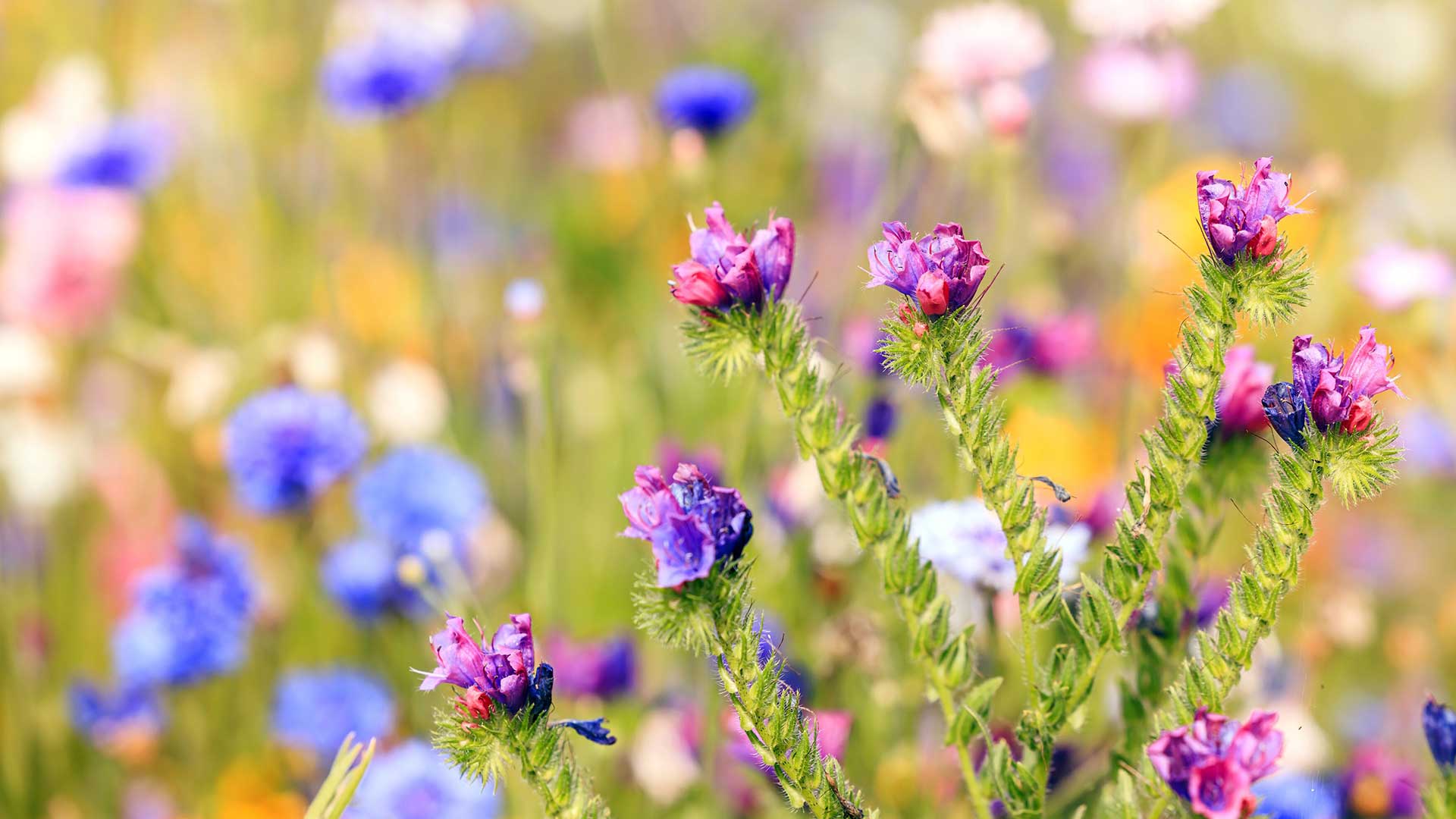
The wildflower garden border trend is hot on our radar for 2024 and for good reason. It’s a beautiful and fuss-free way to fill a space with flowers. Plus, it has environmental benefits.
Sowing wildflowers isn’t exactly a new garden trend, growing designated "meadow areas" filled with native blooms has been gaining popularity for years. However, the Royal Horticultural Society (the RHS) have predicted that wildflowers are stepping even further into the spotlight in 2024 – and by this, they mean into our garden borders.
We asked garden designer Claudia de Yong, wildflower expert and co-founder of Seedball Dr Emily Lambert, and RHS chief horticulturist Guy Barter for their views on this growing garden border trend. Below, they share the benefits of trying it at home, alongside practical advice and top wildflower varieties to grow.
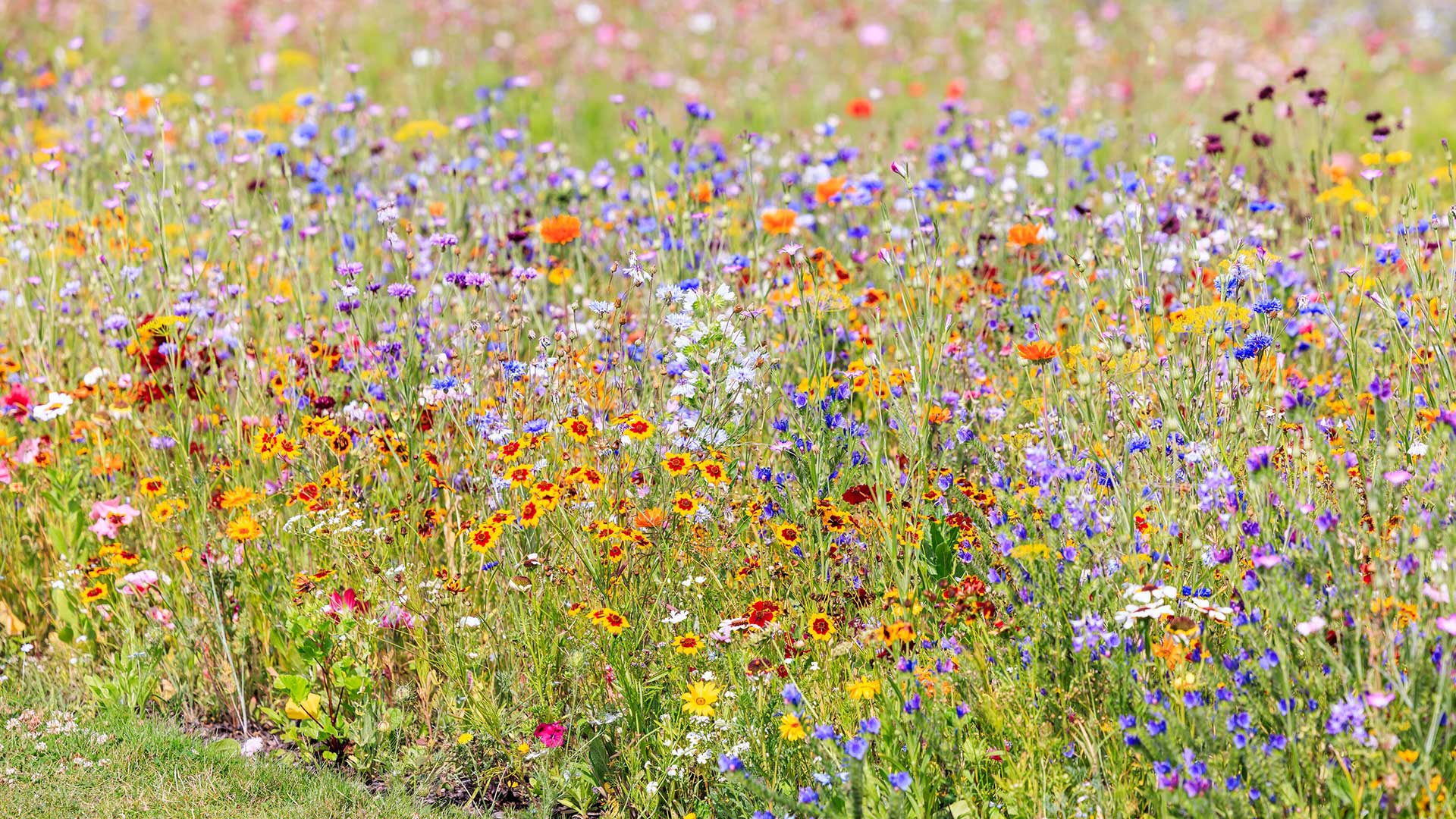
Why the wildflower garden border trend is worth trying
Claudia highlights how UK-native wildflowers provide essential habitat and food sources for local wildlife, encouraging biodiversity and helping pollinators such as bees and butterflies.
That's not to say some of the best plants usually grown in borders aren't useful. More traditional garden flowers – such as dahlias and salvias – provide much pollen and nectar, notes Guy. This is especially the case later in the summer, after native flowers have finished blooming. However, "they are much less used by native insects as food sources for their larvae," he says.
"A potential bonus is that seeds from wildflowers in gardens can repopulate nearby areas of nature-depleted unused or waste ground," Guy says – "an additional benefit for local biodiversity. Locally sourced seeds, from the county Wildlife Trust for example, would be best for this."
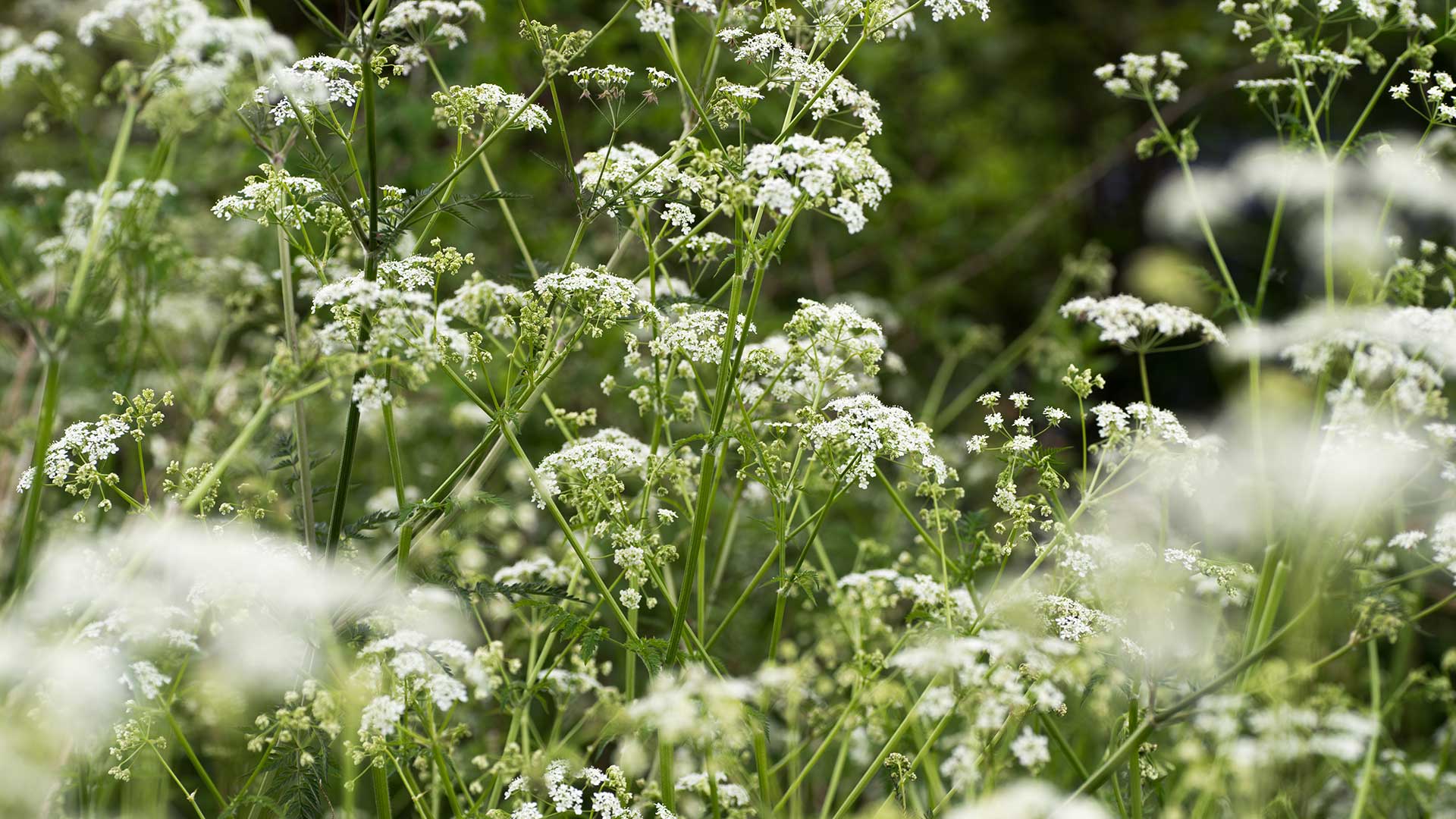
On the topic of eco-friendliness, wildflowers are also a good way to introduce more sustainable gardening practices to our outdoor spaces. As Claudia points out, they often require fewer resources. Mulch and fertiliser aren't usually necessary, and they're generally drought tolerant once established.
This means wildflower borders are easily achievable, too. Wildflowers are known for being low-maintenance and easy to care for, making them perfect for all gardening abilities, says Emily.
Last, not certainly not least, wildflowers are beautiful. "The mix of colours and textures creates a visually appealing, naturalistic look," Claudia says. And, if you want to follow a milder colour palette – which the RHS notes as being continuously popular – there are plenty of options to choose from, including cow parsley and meadowsweet. A cool planting scheme of white and green is the perfect match for the "quiet luxury" garden trend.
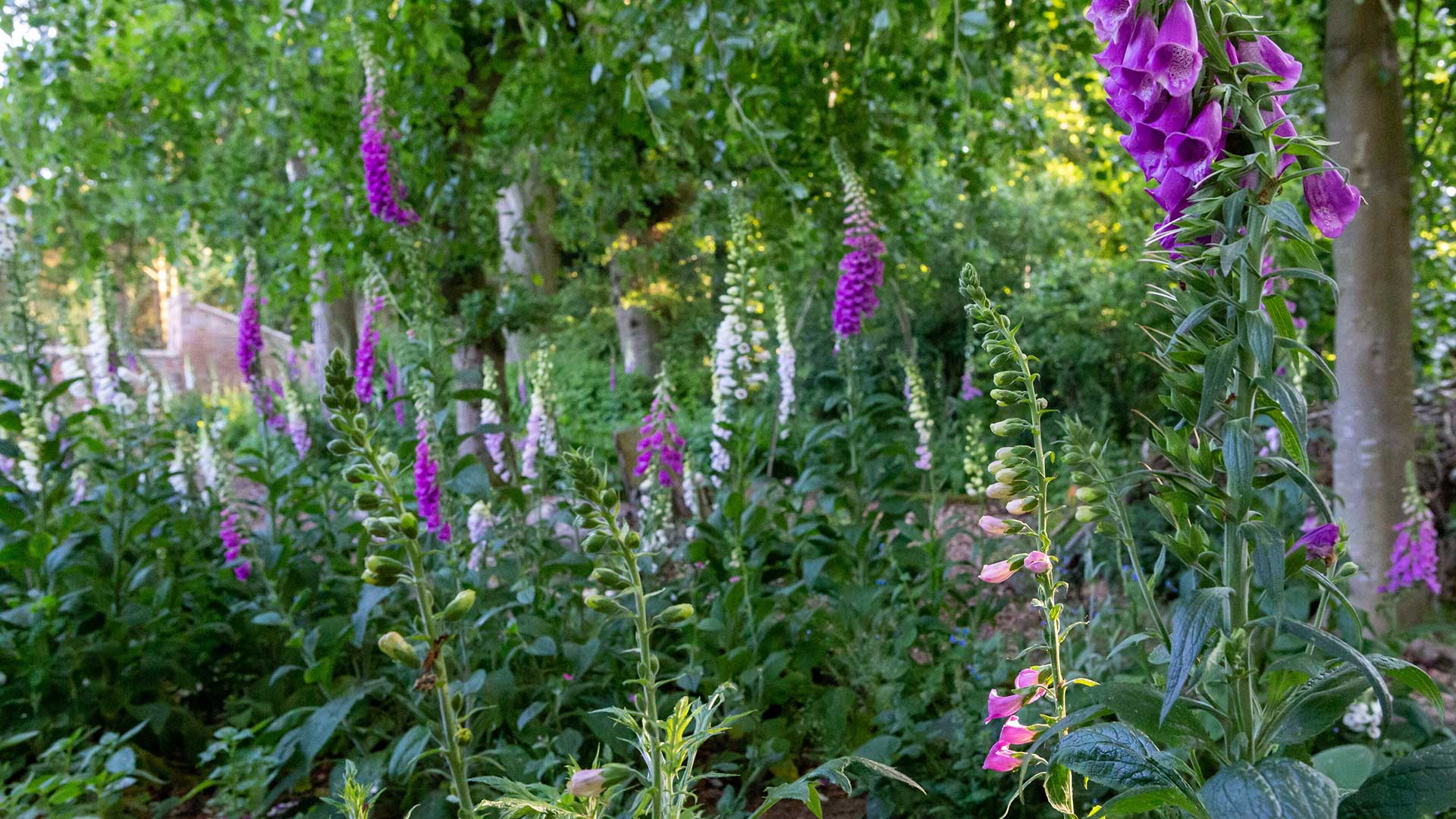
Top varieties of wildflower to grow
"Choose a wide variety of species (diversity is good!)," recommends Emily. By using a mix of annuals and perennials, you can combine quick bursts of flowers with longer-term blooms, she adds.
"Native foxgloves, cornflowers, cowslips, devil's-bit scabious, primroses and thrift are examples of native plants that are easy to fit into beds and borders," says Guy. They’re also widely available as seed, and won't outgrow their welcome, he adds.
"Native seeds are also adapted to specific climate and soil conditions in the UK, which will promote better germination and plant health," highlights Claudia. Her recommendations include ox-eye daisies and musk mallow. "I would also add Rhinanthus minor or yellow rattle to a mix," she adds. "It is a semi-parasitic plant that will reduce the growth of grasses by weakening them and preventing them from dominating the wildflowers."
While many of us try to keep weeds out of our lawns, the wildflower garden border trend may encourage some gardeners to embrace them elsewhere. "Beauty is a personal perception," says Guy. "Although many people won't care for docks, nettles or thistles in their gardens, others will delight in the wildlife possibilities so-called weeds can offer."
The pretty white blooms with yellow centres make ox-eye daisies popular. They're easy-to-care-for perennials, meaning they should return each year. Plus, bees and butterflies love them.
This annual mix contains a range of native summer wildflowers that visiting pollinators will adore. It's ideal if you're looking to scatter seeds directly into your borders.
Impressive bee-friendly blooms make foxgloves a fabulous addition to any garden. They prefer dappled shade and moist soil. You can buy them as seeds, or planted in pots.
Practical advice for planting wildflowers
Before you add wildflowers to your border, you’ll need to check the conditions are suitable. A sunny spot is usually best. "Ensure the site is well drained to avoid waterlogging, and remove any existing grass or weeds, which will prevent any competition with wildflowers," Claudia says.
You can grow wildflowers as plug plants, by starting the seeds off in trays indoors, and then add them into your borders once the risk of frost has passed. Some larger wildflowers, such as foxgloves (a classic choice for cottage gardens), can often be bought ready to plant out.
For an even easier, yet less controlled approach, you can simply scatter seed directly into your borders: a great gardening tip for beginners. Avoid using out-of-date packets of seeds, Claudia notes. She also advises mixing the seeds with a carrier, such as sharp sand, when sowing. This helps to distribute them evenly. After sowing, carefully tread them in, she adds.
Even if you don't have flowerbeds to play with, wildflowers can be used to brighten a pot on your patio or windowsill. Overall, we're big fans of this laidback look – and expect this trend will be here to stay.
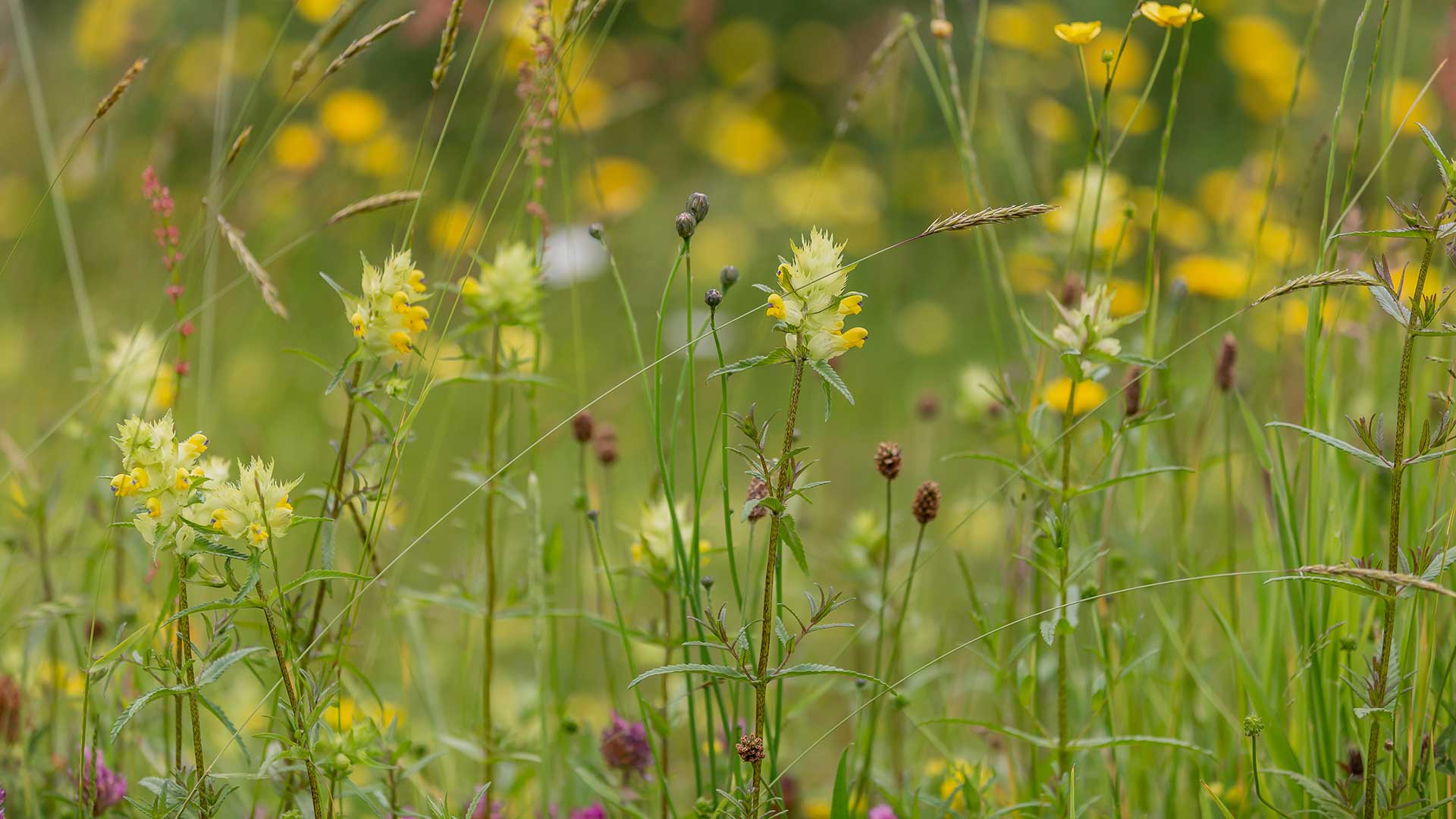
FAQs
Which wildflowers should you be wary of in garden borders?
Some "willing" but still attractive wildflowers may need more intensive management, says Guy. "These include dandelions, hawkbit and green alkanet.
"Native bluebells and ramsons are best treated with caution, however, as management is very laborious and difficult." They’re best for rural gardens or perhaps pot cultivation, he adds.
It’s also a good idea to check whether the wildflowers you plant are poisonous, especially if you have children or four-legged friends running around. All parts of foxglove plants, for instance, are toxic.
What maintenance do wildflower borders require?
Just like when planting grass seed in spring, you’ll need to water your wildflower seeds regularly until they establish.
"Keep an eye out for grasses that are becoming a nuisance and try and weed regularly to prevent dominance of one species," Claudia says.
In the autumn, you may wish to tidy up dead stems and foliage, once plants have gone to seed. Wildflowers will naturally self-sow, but adding more seeds in spring can give your display an extra boost.
What month is best to sow wildflower seeds?
"Autumn and early spring is a great time to start growing wildflowers," Emily says. According to the RHS, most can be sown in March or April, or in September, but they recommend checking your seed packet for details.
If sowing indoors, wildflowers can usually be started in early spring. In fact, many can be added to your list of what to plant in February.







